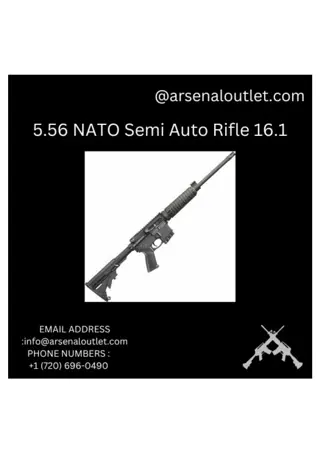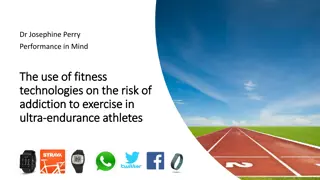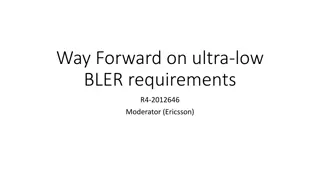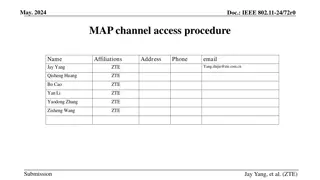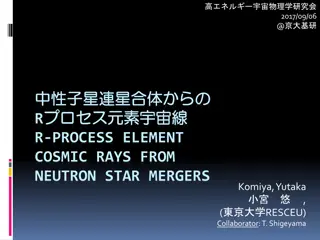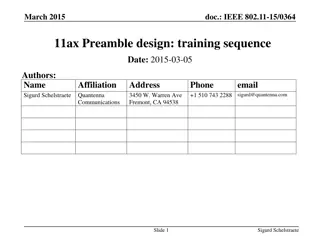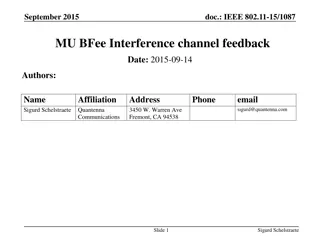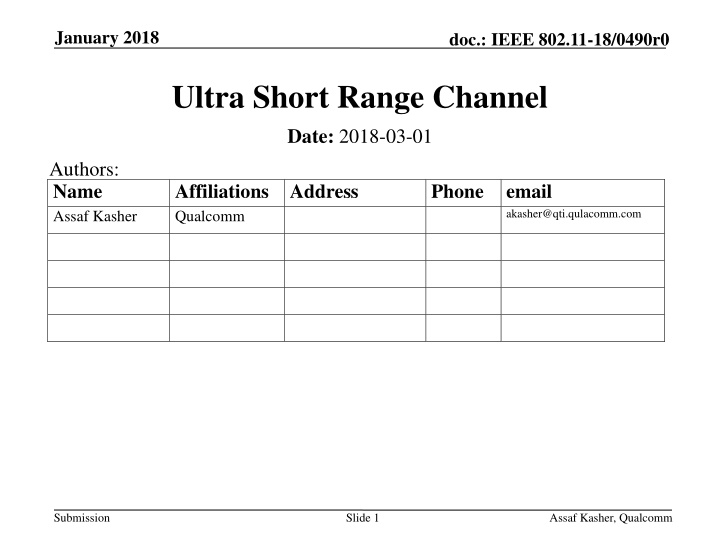
Ultra Short Range Channel Access in IEEE 802.11-18/0490r0 Document
This presentation delves into channel access for ultra-short range scenarios, proposing changes in channel access rules for close proximity use cases within specific ranges. Suggestions include modifications to transmission power levels and interference definitions to enhance performance in ultra-short range communications.
Download Presentation

Please find below an Image/Link to download the presentation.
The content on the website is provided AS IS for your information and personal use only. It may not be sold, licensed, or shared on other websites without obtaining consent from the author. If you encounter any issues during the download, it is possible that the publisher has removed the file from their server.
You are allowed to download the files provided on this website for personal or commercial use, subject to the condition that they are used lawfully. All files are the property of their respective owners.
The content on the website is provided AS IS for your information and personal use only. It may not be sold, licensed, or shared on other websites without obtaining consent from the author.
E N D
Presentation Transcript
January 2018 doc.: IEEE 802.11-18/0490r0 Ultra Short Range Channel Date: 2018-03-01 Authors: Name Assaf Kasher Affiliations Address Qualcomm Phone email akasher@qti.qulacomm.com Submission Slide 1 Assaf Kasher, Qualcomm
January 2018 doc.: IEEE 802.11-18/0490r0 Abstract This presentation discuss channel access for Ultra Short Range (scenario) as resolution to CID 1084. Submission Slide 2 Assaf Kasher, Qualcomm
January 2018 doc.: IEEE 802.11-18/0490r0 CID 1084 As there is a close proximity use case, to achieve it, mechanism of determining carrier sense level according to transmission power, i.e., when transmission power is lower then carrier sense level is higher, should be included somewhere in section 10. As in comment. Submission Slide 3 Assaf Kasher, Qualcomm
January 2018 doc.: IEEE 802.11-18/0490r0 Discussion What is close proximity or Ultra Short Range ? We propose that this is limited to transmissions within a range of 10cm (D1). What change is needed in Channel Access rules? We propose that if the device does not create significant interference at a ragne of 30cm (D2), it may ignore channel access rule (i.e it may transmit even when there is NAV or active packet on the medium). Submission Slide 4 Assaf Kasher, Qualcomm
January 2018 doc.: IEEE 802.11-18/0490r0 What is significant interference We propose that significant interference will be defined as causing interference of 3dB below MCS 1 sensitivity at range of 30cm. This means that the EIRP of TX in this case is limited to -13.5dBm This mean that device at 10cm receives at most -65dBm This would limit the rate in USR to MCS 8 (1.925Gbs) This rate may be too low We can fix that by either reducing D1 (e.g. to 5cm) or increasing D2 Submission Slide 5 Assaf Kasher, Qualcomm
January 2018 doc.: IEEE 802.11-18/0490r0 Options for Resolution Add an exception to channel access rules: If the EIRP of the Transmitter is below -13dBm (resulting in a level of 3dB below MCS1 at a range of 30cm), a STA may initiate transmission even if PHY-CCA.indication(busy) or NAV is active Reject the comment Modify the numbers (30cm, -13dBm) Adapt the CCA sensitivity to TX-Power/EIRP Submission Slide 6 Assaf Kasher, Qualcomm
January 2018 doc.: IEEE 802.11-18/0490r0 References Submission Slide 7 Assaf Kasher, Qualcomm




